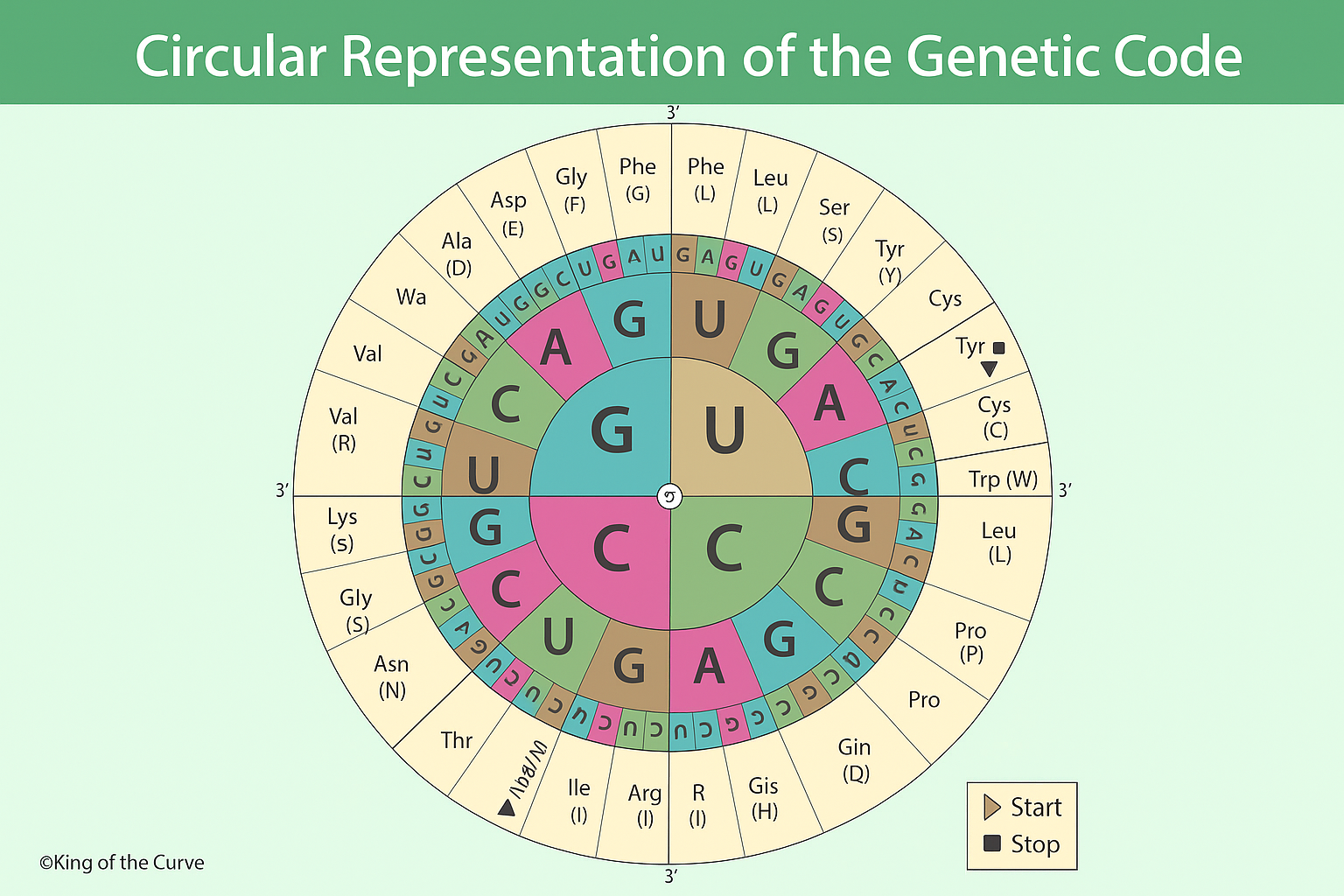🧬 Circular Representation of the Genetic Code: Cracking the Blueprint of Life
The genetic code is the language by which DNA and RNA sequences are translated into proteins—the workhorses of all living organisms. At the core of this process lies a system of codons, triplets of nucleotides that correspond to specific amino acids. To visually simplify this intricate mapping, scientists often use a circular codon chart, or circular representation of the genetic code. This visual tool helps students and researchers quickly identify which RNA codons translate to which amino acids.
🔄 Understanding the Circular Genetic Code
Unlike the traditional table format, the circular codon chart begins from the center and expands outward in layers:
First Nucleotide (5' end): The innermost ring.
Second Nucleotide: The middle ring.
Third Nucleotide (3' end): The outermost ring.
By reading from the inside out (e.g., A → U → G), you can identify a codon like AUG, which translates to methionine—the start codon for most proteins.
🧪 Key Features of the Genetic Code
| Feature | Description |
|---|---|
| Triplet Codon System | Every codon is composed of three nucleotides. |
| Degeneracy | Multiple codons may code for the same amino acid. |
| Start Codon | AUG (methionine) initiates protein synthesis. |
| Stop Codons | UAA, UAG, and UGA signal the end of translation. |
| Universal | Nearly all living organisms share this code. |
🔍 Why Use a Circular Chart?
Visual Clarity: Easier for spotting relationships between codons and amino acids.
Educational Value: Helps students understand the sequential nature of codon translation.
Efficiency: Quick reference in labs and classrooms.
🎓 Call to Action
Want to simplify how you study molecular biology? Use this circular codon chart as a visual tool to decode RNA sequences easily. Whether you're preparing for the MCAT, USMLE, or your next molecular biology quiz, mastering this chart gives you a competitive edge!
✅ Summary
The circular representation of the genetic code condenses the complex RNA-to-protein translation process into a visually accessible format. By reading codons from the center outward, you can identify amino acids, start and stop signals, and uncover the elegant simplicity behind life’s molecular machinery.
Frequently Asked Questions (FAQs)
-
Aim for 4-6 focused hours, ensuring you incorporate breaks to avoid burnout.
-
Practice mindfulness techniques, take practice exams under realistic conditions, and maintain a balanced lifestyle.
-
Set short-term goals, seek support from mentors, and reward yourself for small achievements.
-
Regular exercise improves focus, reduces stress, and enhances overall mental clarity.
-
KOTC offers personalized learning tools, gamification features, and adaptive question banks to help students stay on track without burnout.


